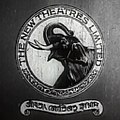New Theatres, Ltd
From the Audiovisual Identity Database, the motion graphics museum
This article is missing images. If you have an image of any logo described here, please upload it and add it to the page in the appropriate place. (More information) |
This article may require cleanup to meet AVID's quality standards. Please help improve this article if you can. |
Logo description and captures by naxo-olé
Background
New Theatres, Ltd is an Indian film company founded in 1932 in Kolkatta (a.k.a. Calcutta, West Bengala). This company was the largest film company during the first decades of Bengali language cinema. From 1932 to 1955, it produced 150 films. In the 1960's the company produced some movies under the name of "New Theatres Ehibitors Pvt. Ltd.". In 2011, this company produced a film, Ami Aadu, after almost five decades without activity.
1st Logo (Opening variant) (September 7, 1932-1955, February 25, 2011)
Logo:
- Opening: On a black or grey background, we see a half circle. Inside it there's a picture of two elephants on a sunset, both on different extremes of the half circle. They each hold a flower with their trunks. In the middle of both we see a big rose. Above the big circle, we see inside a ribbon the motto of the company in Bengali. Below the same semicircle, we read "The New Theatres Ltd".
- Closing: On a black or grey background, we see a circle. Inside it there's a picture of an elephant screaming, with its trunk in the air. On the upper half of the circle, we read "THE NEW THEATRES LIMITED", while in the lower half there's a kind of ribbon. Below the circle, there's a ribbon with the name of the company in Bengali written on it. Some movies have the motto of the company in Bengali on the lower part of the circle, separated from the English name by two stars.
Technique:
- Opening: None.
- Closing: None. In Bidyapati, the elephant inside the circle is live action.
Music/Sounds:
- Opening: The opening theme of the film. None in Ami Aadu.
- Closing: The closing theme of the film.
Availability: Seen on many films from 1932 to 1955, like Chandidas, Devdas, Kasinath, Udayer Pathey, and Dui Purush. It surprisingly appeared in 2011's Ami Aadu.

